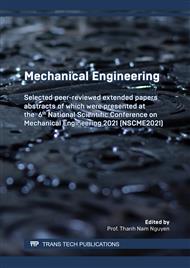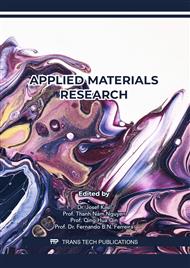p.37
p.47
p.55
p.65
p.75
p.87
p.93
p.99
p.107
Design of 2D Wave Booster Ultrasonic Vibration-Assisted Cutting Tool in Small Size Surface Machining
Abstract:
Ultrasonic Vibration-Assisted Machining (UVA) is a machining process that adds a micro-scale high frequency vibration to the motion of a cutting tooltip to interrupt the continuous interaction of tool - workpiece surface. A good point of machining with UVA is more effective than conventional processes such as lower machining forces, higher machining stability, less tool wear and better surface finishes. In molds fabrication with some narrow cavities having a conversion space diameter of less than 3mm will face many difficulties while low surface roughness is required. Low stiffness of technological system in these cases of finishing machining is the reason of a weak machining in high-speed cutting. The ability to achieve cutting speeds for surface finishing of this type in tight spaces is also an interesting application for UVA tools. This paper discusses the finishing machining tool design with UVA for milling machine in such as analyze of the main parameters, adding diagonal split and simulation of the generated vibration effects to evaluate the achieved results before fabrication by using the help of ANSYS.
Info:
Periodical:
Pages:
75-83
Citation:
Online since:
June 2022
Authors:
Keywords:
Price:
Сopyright:
© 2022 Trans Tech Publications Ltd. All Rights Reserved
Share:
Citation:



